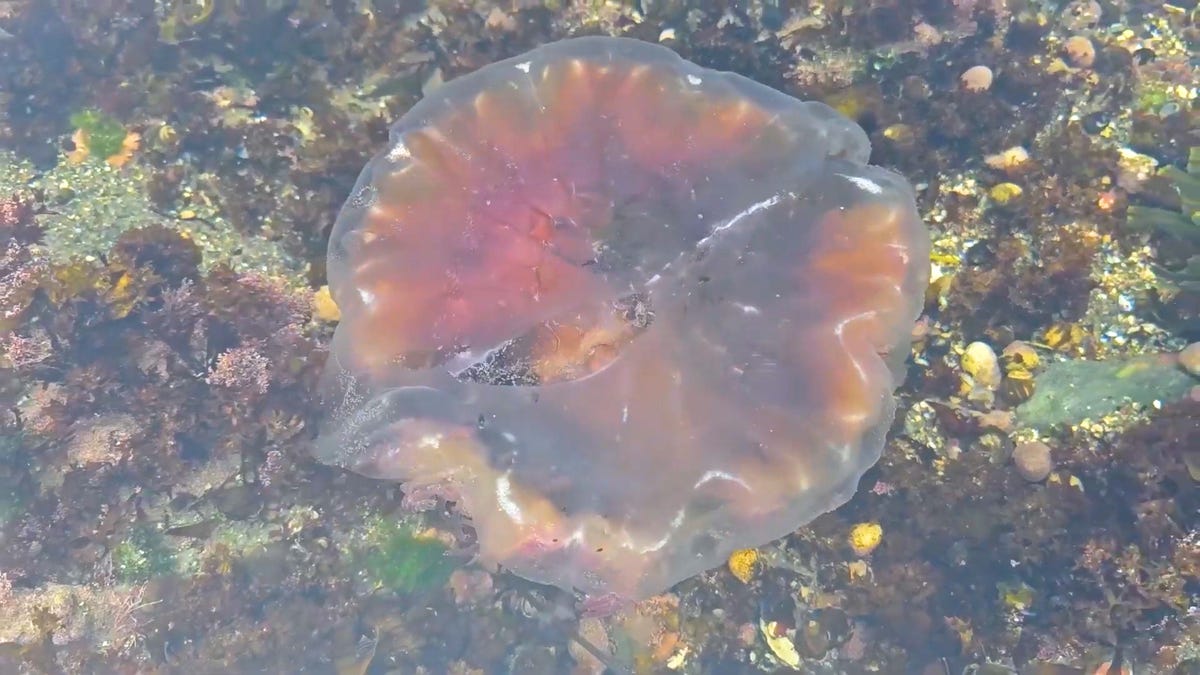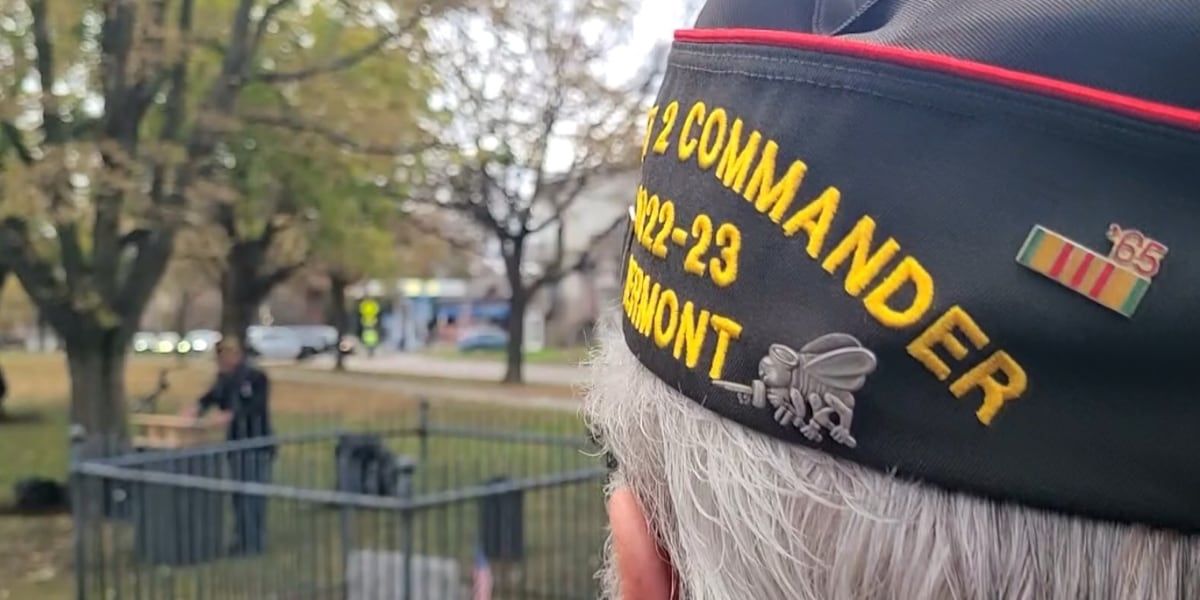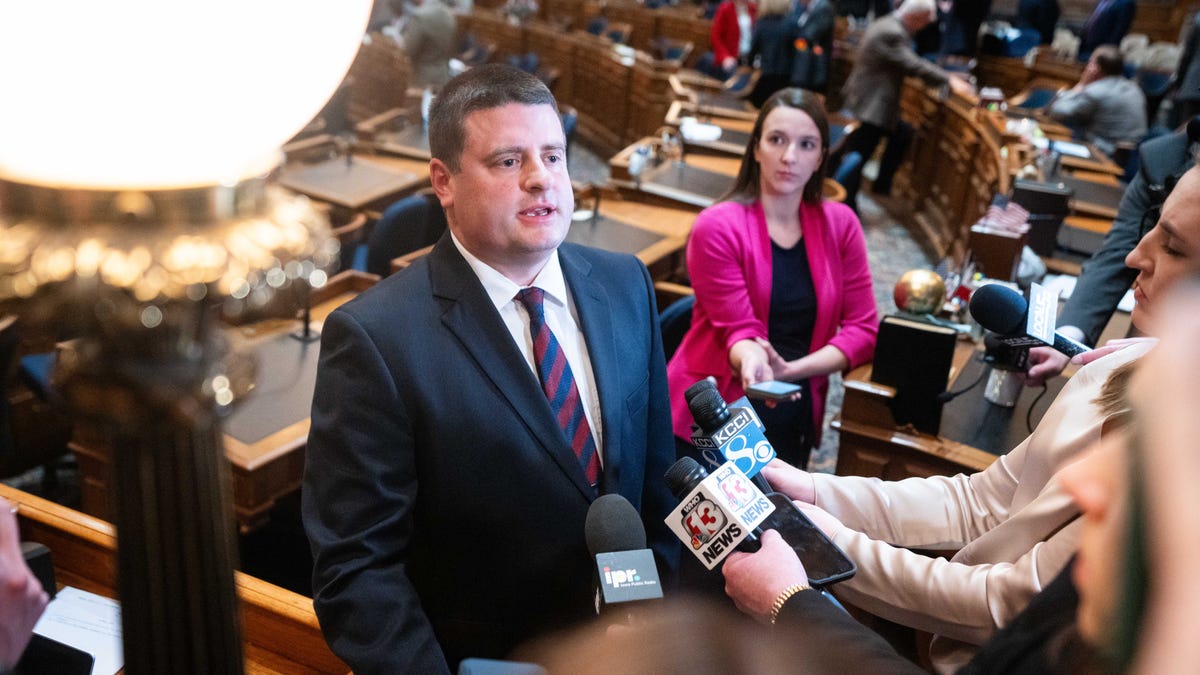Lifestyle
Andre Ward Says Jake Paul Vs. Mike Tyson Is Impossible To Predict

TMZSports.com
If you were looking for betting advice from Andre Ward on the Mike Tyson vs. Jake Paul fight … search elsewhere — the former boxing superstar tells TMZ Sports it’s so close between the two, he has absolutely “no idea” how things will shake out.
The ex-champ broke it down for us on Thursday — roughly 24 hours before Tyson and Paul will square off in Dallas on Netflix — explaining that because of Tyson’s age and background, the scrap is simply impossible to predict.

“If it’s the average 58-year-old, you kind of, sort of know how this thing is going to go,” Ward said. “But we’re talking about Mike Tyson. If there’s a 58-year-old that I’m not worried about, it’s him.”
Ward says what Paul’s displayed in the ring over the last few years muddies up any sort of forecasting as well … because he’s improved to the point where he certainly could knock out Tyson on Friday night.
Ward tells us, though, watchers shouldn’t have to wait long to figure it out — he thinks by the third or the fourth round, it should start becoming apparent.

He said viewers will be able to clearly see Paul’s punching prowess — or if Tyson’s tiring.
“Midway through,” he said, “that’ll give all of us the clear picture of how this fight is going.”
Regardless of who comes out with the win, it’s obvious Ward’s super impressed with Iron Mike’s prep — telling us he was astounded by the shape he saw the legend in during their recent sit-down interview.
As for if it all makes Ward want to come back — check out the clip, doesn’t seem there’s a chance in hell … even if the payday’s Tyson vs. Paul-esque!

Lifestyle
In Season 3, 'Squid Game' hasn't changed much — and that's the problem

Lee Jung-jae as Seong Gi-hun in Squid Game Season 3.
No Ju-han/Netflix
hide caption
toggle caption
No Ju-han/Netflix
After watching the third and supposedly final season of Netflix’s surprise hit South Korean drama Squid Game, it’s tough to remember why this show became such a genre-redefining hit when it first debuted in 2021.
That’s not because the show has changed. To be sure, all the elements that powered its success back then are still in place now. Most importantly, it has retained a striking visual aesthetic — one that transforms a space where people in poverty are forced to play deadly children’s games into a twisted vision of a playground-turned-nightmare.
And there’s the bonkers concept — wealthy VIPs secretly bankrolling what amounts to the most deadly reality TV competition in the world for their own amusement.
But ultimately, even as Squid Game amps up the brutality and forces characters to make even more terrible choices, we have seen versions of this story before. And that familiarity robs the narrative of its impact – particularly when the show so often telegraphs what is coming for viewers well before it finally happens.

Jo Yu-ri as Jun-hee.
No Ju-han/Netflix
hide caption
toggle caption
No Ju-han/Netflix
The show’s second season expanded Squid Game‘s universe by introducing us to the world of the staffers who implement these horrific games, dressed in pink jumpsuits and masks adorned with a triangle, square or circle. In this new season, we learn why one of them seems so different from the others, pursuing a personal mission that requires infiltrating the games.


The main story of this final season concludes the quest of our hero, Lee Jung-jae’s Seong Gi-hun – aka Player 456 – a father and degenerate gambler who returned to the deadly games last season after surviving in the show’s first run of episodes, hoping to find a way to dismantle them from within.
Unfortunately, the new episodes mostly confirm a sad truth he learned last season – there are just enough people here warped by greed, addiction, selfishness and desperation, that stopping this lethally exploitative game is awfully tough to do.
As the third season begins, Gi-hun is broken by his failed attempt to stop the game by leading a team of competitors with weapons to overpower the guards. It’s a constant theme in Squid Game – the heroic goals of some characters, often completely subverted or undercut by the failure of other, less heroic figures. This season reinforces that theme constantly, making it even bleaker and unpromising than earlier editions.
There are at least three stories playing out here: The efforts of the subversive staffer inside the organization, Gi-hun’s quest for renewed meaning inside the competition and, outside the game, attempts by a former police officer to find the island where it’s all going down. Turns out, the ex-cop’s brother is the organizer Front Man — played with chilling intensity by Lee Byung-hun — who always seems one step ahead of everyone trying to subvert the game.

Lee Byung-hun as the Front Man.
No Ju-han/Netflix
hide caption
toggle caption
No Ju-han/Netflix
There is stuff in this third season that fans may love but pulled me up short. Too many plot twists were so obvious, I was distracted waiting for characters to catch up.
The show still draws its characters with a heavy hand — making sure we know who is virtuous and who is not — foreshadowing which players are destined for an honorable death and which are likely to go down mired in their own weaknesses. There are also way too many performances — particularly the English-speaking, mostly-white VIPs who chortle over the deadly fates of the contestants — that feel overwrought or too stiff or both.

The larger ideas behind Squid Game are also spelled out in neon letters. We see a character who claims to be a shaman with special powers of perception draw in a desperate following. Surprise: it doesn’t end well – an obvious take on the dangers of blindly following deceptive blowhards. We endure moments when greed leads contestants to unspeakable acts – including a father turning his back on his child.
And we take in how the wealthy toss crumbs to desperate people, just to watch what extremes they might go through to snatch those crumbs up.
According to Netflix, Squid Game’s first season in 2021 is the streamer’s most popular original season of TV ever. There is no doubting the power and global influence of the franchise, which spawned Halloween costumes, a live experience and comedy sketches around the world – which makes me wonder if this really will be the show’s final season, particularly if the last installment proves equally popular.
Fans may disagree with my criticisms, and enjoy the heightened violence, extended world building and sobering, poignant conclusion of Squid Games‘ third season a lot more than I did. But I do salute creator/showrunner Hwang Dong-hyuk for producing a TV series that helped wake up American audiences to the power of South Korean entertainment, ending its story with as pointed a critique of capitalism as I have ever seen on television.
Lifestyle
How to have the best Sunday in L.A., according to Victoria Monét

Like most busy working mothers who struggle with work-life balance, three-time Grammy Award winner Victoria Monét cherishes spending time with her 4-year-old daughter, Hazel, who she shares with ex-boyfriend fitness trainer John Gaines.

In Sunday Funday, L.A. people give us a play-by-play of their ideal Sunday around town. Find ideas and inspiration on where to go, what to eat and how to enjoy life on the weekends.
Known for writing hits like Ariana Grande’s “Thank U, Next,” Blackpink and Selena Gomez’s “Ice Cream” and Chloe x Halle’s “Do It,” in addition to “On My Mama” from her debut album “Jaguar II,” the L.A.-based R&B singer-songwriter recently penned something for younger audiences: the heartwarming children’s picture book “Everywhere You Are,” due out June 24.
In a recent interview, Monét revealed the inspiration behind her book. (She will discuss her new book at Malik Books on Saturday and the Reparations Club along with moderator Gabrielle Union on Sunday. Tickets are required.)
“As a parent, it’s hard to miss those pivotal moments,” she said of the separation anxiety that many children feel when their parents are working and unavailable. “It’s important for children to know that there is a purpose behind them. I wanted to offer assurance and relay an important message: Everything will be OK.”
Despite her demanding schedule, Monét always finds a way to make quality time for Hazel. In 2023, Hazel, then 2, became the youngest Grammy nominee in history when she was nominated for her vocals in “Hollywood” alongside her mother. And when Beyoncé kicked off her “Cowboy Carter” tour at Sofi Stadium in Inglewood last month, Monét took Hazel to her first concert. Their ideal Sunday in L.A., which Monét fondly calls “me time,” would involve playing outdoors, enjoying a visit to a family fun center, indulging in vegan sweet treats and reading “Everywhere You Are” to one another before bed. Here, Monét shares a joy-filled Sunday spent with her daughter.
This interview has been lightly edited for length and clarity.

8:30 a.m.: Awake with gratitude
On Sundays, me and Hazel wake up later than usual because we probably stayed up late the night before if I didn’t have to work. We normally start our day by doing our gratitude journaling, where she doodles and I write. Then we do our self-care, where we brush our hair and teeth. I will then go downstairs and make her character pancakes with chocolate chips or Fruity Pebbles cereal.
After that, we may make some art. She loves to draw, and we have a nice art section in the house featuring everything from crayons to markers, scratch-off art, watercolors and rainbow paints.

10 a.m.: Dance, dance, dance!
Hazel is active and enjoys doing things, but on the weekends, we have instructors come to the house for dance lessons. So far, she has taken ballroom dance, ballet and tap. She was in gymnastics for a while. We’re looking forward to taking ballet and tumbling at To The Pointe Dance and Pilates Centre.
She loves being outside and enjoys riding her bike or visiting the park. During the week, she plays soccer twice a week. She loves it because it isn’t serious yet. It’s more about giving them a chance to have fun. They do drills on how to kick and run at the same time. It’s hard when you think about it.
12 p.m.: Indulge in fresh pasta at Uovo
Hazel loves pasta, so we often go to Uovo Pasta, which has several locations in Los Angeles. Their handmade al dente noodles are perfect — they overnight them from Italy. We would get the pomodoro and make sure that it’s not too spicy. Their cacio e pepe is great, but that’s a once-in-a-blue-moon thing for me because I’m [mostly] plant-based. Hazel usually gets what I get. When I was pregnant with her, I ate Flamin’ Hot Cheetos all the time, and now she likes them too. After lunch, I’d have to bring her home because she naps around 1 p.m.

2:30 p.m.: Jump for joy at Off the Wall
After her nap, we’ll hit Off the Wall in Woodland Hills. It’s trampoline heaven, where you can catapult higher than you intended to. There are rock climbing walls, an arcade and food. They have an air-filled basketball court that’s on a soft floor and there are birthday party rooms in the back. Hazel loves that place, especially the trampoline. She likes me to chase her, so I get a workout while we are there. I’ll literally be sweating when we leave.

4 p.m.: Sample sweet treats at Happy Ice or Magpies
For a sweet treat, Happy Ice is a favorite. It’s the best-tasting slushy snow cone, especially during the summer when it’s hot. They have locations in Northridge and Hollywood, but they also have a truck [at Smorgasburg on Sundays in downtown L.A.]. For Hazel’s birthday party, we had the truck come to our house. I usually get the Rainbow Rocket, which is a mix of all their Italian ice flavors, and Hazel gets the same thing I do. She is happy to get anything, frankly. Magpies Softserve is another one of our favorites. Their vegan honeycomb soft serve is so good. Hazel likes their soft-serve pies.
6 p.m.: Tapas-style dining at Joey
Hazel is newly picky, but if she were to go out to dinner with me, she would love Joey in Woodland Hills, which offers a wide-ranging menu. They check off a box for everybody. I’m a tapas-style girl, so I like to order a variety of different dishes: guacamole, tuna and avocado crunch roll and Korean fried cauliflower. I’ll order the sake-glazed Chilean sea bass and pasta for Hazel.
We’re homebodies, so another dinner option would be spending time together at home, cooking and playing in the pool. We enjoy making veggie and tofu tacos together. Things you can eat with your hands are always fun with kids. That’s one reason they like s’mores so much. Occasionally, we’ll make something pescatarian like grilled salmon or other fish.

8 p.m.: Watch “Moana 2” … again
At night, we would watch a movie and wind down with some Skinny Pop popcorn. Hazel would probably watch “Moana 2” again right now. We saw it in the theaters, and she goes through phases where she wants to watch different things, but she recently said that she wants a “Moana 2” party for her fifth birthday. I thought she’d like something else by then. But then, she thinks there will be 20 Moanas.

10 p.m.: Read “Everywhere You Are” before bed
Before bed, Hazel often asks me to read “Everywhere You Are” to her. She loves to read and enjoys being read to. I’ve read it to her so many times that she can read it back to me. She recorded a segment of the audiobook with me and was excited to hear herself when she recorded it in the studio. Reading the book to her, I realized that missing a parent is a lot like losing a loved one. You can still feel their presence even though they’re not around. Love binds people together despite physical distance. Even when they don’t see you, children need to know that you’re still there and that you’ll always be with them.
Lifestyle
Asked to flag 'negative' National Park content, visitors gave their own 2 cents instead

Signs like this one in the Presidio of San Francisco, part of the Golden Gate National Recreation Area, have been going up around the country in response to President Trump’s executive order titled “Restoring Truth and Sanity to American History.”
Chloe Veltman/NPR
hide caption
toggle caption
Chloe Veltman/NPR
Signs installed earlier this month in national parks across the country asking visitors to share feedback on “any signs or other information that are negative about past or living Americans” are eliciting all sorts of reactions. But comments viewed by NPR don’t provide the requested feedback.
Visitors to the Presidio of San Francisco, a National Historic Landmark and former military garrison with a complex history seemed unimpressed by the small black-and-white sign placed on a coffee table at roughly shin-level near the Presidio’s welcome center on a recent morning.

“The point of going to a park is to enjoy nature, not to whistleblow something that casts the American people in a bad light,” said Evan Sutterfield, a San Francisco school teacher enjoying a day out on his summer break.
“I think you need to tell the whole story,” said Russ Harwell, visiting from Charlotte, N.C. “If you’re gonna write it out of history, then you’re doomed to repeat it.”
Linda Mosinian from Milwaukee, Wis. added: “I think this is a waste of time.”
‘Restoring Truth and Sanity to American History’
The signs, which invite people to send comments anonymously using a QR code, phone number, email or web address, have appeared in response to an executive order President Trump issued in March titled “Restoring Truth and Sanity to American History.” It specifically calls for the removal of content from monuments and properties within the Department of the Interior that “inappropriately disparages Americans past or living.”
In a statement to NPR, the Department of the Interior said: “The effort ensures public lands reflect an accurate portrayal of American history and heritage.”

NPR reviewed dozens of comments submitted from June 4 to 12 regarding signs placed in parks across the country. According to The Coalition to Protect America’s Parks, a multi-page PDF containing these comments was leaked by a national park employee who took screenshots of the comments pages on their computer and then shared the PDF with parks advocacy groups.
None of the submitted comments suggest the parks need to change their depictions of people or history.
Some are supportive. “The park rangers and volunteers go above and beyond to tell the full American story,” stated a comment about Catoctin Mountain Park in Maryland.
Others say national parks should reflect even more of the country’s difficult history. “Need more history on how black and indigenous people have been exploited,” one comment stated.
Differing opinions
That’s not to say all visitors are happy about the historical information shared at parks.
Department of the Interior spokesperson J. Elizabeth Peace said after Trump issued the executive order — but before the signs went up — her department had already started receiving feedback from national park visitors via the department’s email address.
Peace said one example relates to Capitol Reef National Park in Utah, where a visitor reported that a souvenir postcard mislabeled a nearby landmark and appeared to copy text from Wikipedia without attribution.
Another came from a visitor concerned about a video on the website of the Washington Monument in Washington, D.C., which inaccurately stated George Washington ended his inaugural oath with a phrase historians widely agree lacks definitive sourcing.

The phrase in question was “So help me God.”
Neither of these comments related to Trump’s executive order about content that, “inappropriately disparages Americans past or living.” But Peace said they were nevertheless useful.
“Both examples provided were reviewed by the National Park Service and appropriate corrective or clarifying action was taken,” Peace said. “These examples underscore the value of public feedback in helping us maintain historical accuracy across our sites and materials.”
Accuracy challenges
Accuracy isn’t a given, because feedback can be submitted through a general website or email address accessible from anywhere in the world.
“What would stop somebody with an agenda from posting fake comments?” said Clara Wooden, a member of the board of The Coalition to Protect America’s National Parks. “People at both ends of the ideological spectrum can game the system without even setting foot in a national park.”
In response to these concerns, the Department of the Interior’s Peace told NPR comments are individually reviewed before being routed to appropriate subject matter experts for further evaluation and validation. “This manual review process helps ensure that the feedback we work with is both relevant and credible,” she said.
-

 Arizona1 week ago
Arizona1 week agoSuspect in Arizona Rangers' death killed by Missouri troopers
-

 Business1 week ago
Business1 week agoDriverless disruption: Tech titans gird for robotaxi wars with new factory and territories
-

 Technology1 week ago
Technology1 week agoSenate passes GENIUS stablecoin bill in a win for the crypto industry
-

 Business1 week ago
Business1 week agoProtesters are chasing federal agents out of L.A. County hotels: ‘A small victory’
-

 Technology7 days ago
Technology7 days agoMeta held talks to buy Thinking Machines, Perplexity, and Safe Superintelligence
-

 Technology1 week ago
Technology1 week agoSpaceX Starship explodes again, this time on the ground
-

 Technology6 days ago
Technology6 days agoSamsung’s Galaxy Watch 7 has returned to its lowest-ever price
-

 News1 week ago
News1 week agoVideo: Inside Trump’s Shifting Stance on Iran



















